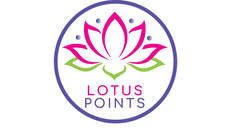Burning questionsWhat is a mantra?A mantra can be anything from one syllable to a verse. The seed mantra is one, two, three or four syllables uttered at a certain melody to carry the intended vibration (e.g. Ohm, So-Ham, Ham-Sa, Sa-Ta-Na-Ma). Mantras can be phrases or sentences that usually include a seed mantra and a name of a deity whose assisstance you are invoking (e.g. Ohm Namaha Shivaya, Ohm Ganapati Namaha). They can also be longer, and usually have a catchy melody (e.g. Gayatri Mantra, Maha Mrityunjaya Mantra).
Mantras are repeated in meditation, but also throughout the day, when you need to focus, concentrate or release the unfavorable emotion. It is very good to sing a mantra while cooking, because the food takes the energetic vibration and becomes very beneficial. We repeat mantras 108, 1008 times or less, 27, 54, or whichever 'sacred' number you find comfortable with. These numbers contain number 9 in them, as this is the divine number of perfection. |
Is mantra a prayer?Can I chant mantras even if my religion is not Hinduism?At some levels, mantras ARE like prayers, because they are chanted for Pujas in temples and in daily worship, although we usually chant verses from Upanishads as 'prayers'. There is a wide misconception about Hinduism as a polytheism or idolatry, worshiping stones and statues. The truth is far beyond that, and it starts with the name Sanatana Dharma. It is an all-enveloping set of codes that can be understood as religion, philosophy, moral codes, science, and instructions of how to live on this planet. The main guiding idea of Sanatana Dharma is ADVAITA or oneness - we are all but extremities of a giant universal organism that is the cosmos. We can all get in touch with the Supreme Consciousness if we focus on what is relevant, and forget about the mental garbage we have been fed by society and institutions.
If you feel repulsion towards mantras, do not use them in your daily life, but if you are curious, start with the simple ones and see where they take you. Sanatana Dharma insists on individual experience and exploration. It does not qualify anything as a 'sin' or 'hell', but you should always know there are natural forces that act as consequences of harmful behaviour. |
Which mantra is best for me?The one you feel drawn to is the best for you. Later, when you get used to it, you will seek mantras that have particular function.
Ohm Shanti is very calming and easy for beginners. Do I chant aloud or silently?Certain mantras, like Ham-Sa are not chanted out loud. Sa-Ta-Na-Ma is chanted in different ways throughout 30 minutes: aloud, whispering, and silent.
It is not necessary to chant out loud, but the effect is much better if you do. Our mind is focused if it hears the sound so it cannot easily wander about. |
Do I have to sit in the lotus position?Ideally, but if you find it very uncomfortable, don't. It is crucial that your spine is upright, so, sitting down on a pillow, bed, soft mat with bolsters, or standing is ok, as long as your spine is straight and vertical.
Do I need a mala?You can chant for a certain period of time, so you can set up a timer. The best time is 12-15 minutes. Chanting with Mala (praying beads, usually 108) helps you focus on the chanting, and when your finger is busy, your mind will not run away from here and now.
|
Mantras on Soundcloud
Listen to the mantras on Soundcloud. Choose your favourites and enjoy your meditation!
When you chant Sa-Ta-Na-Ma, the hands should form different mudras for different syllables.
|
|




